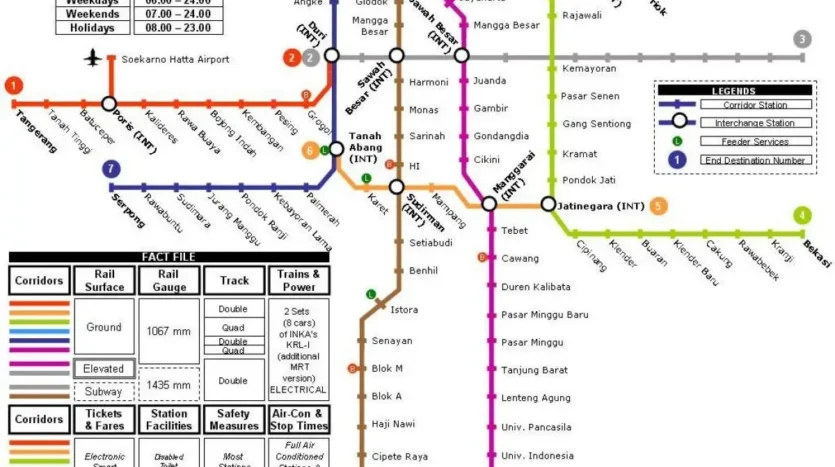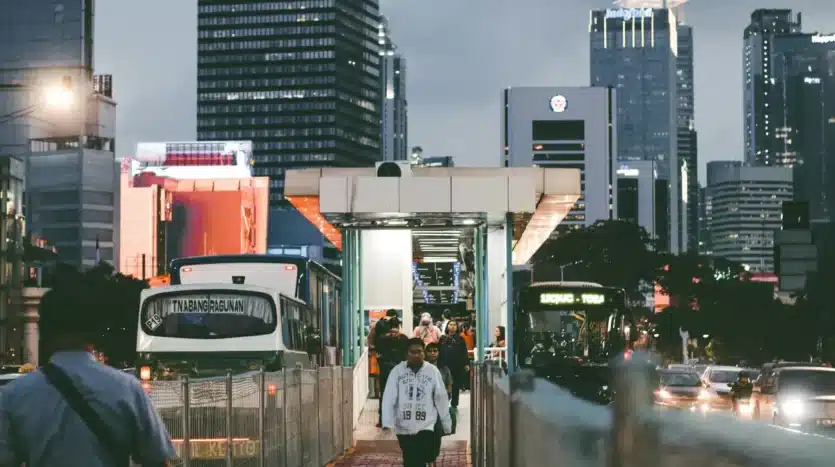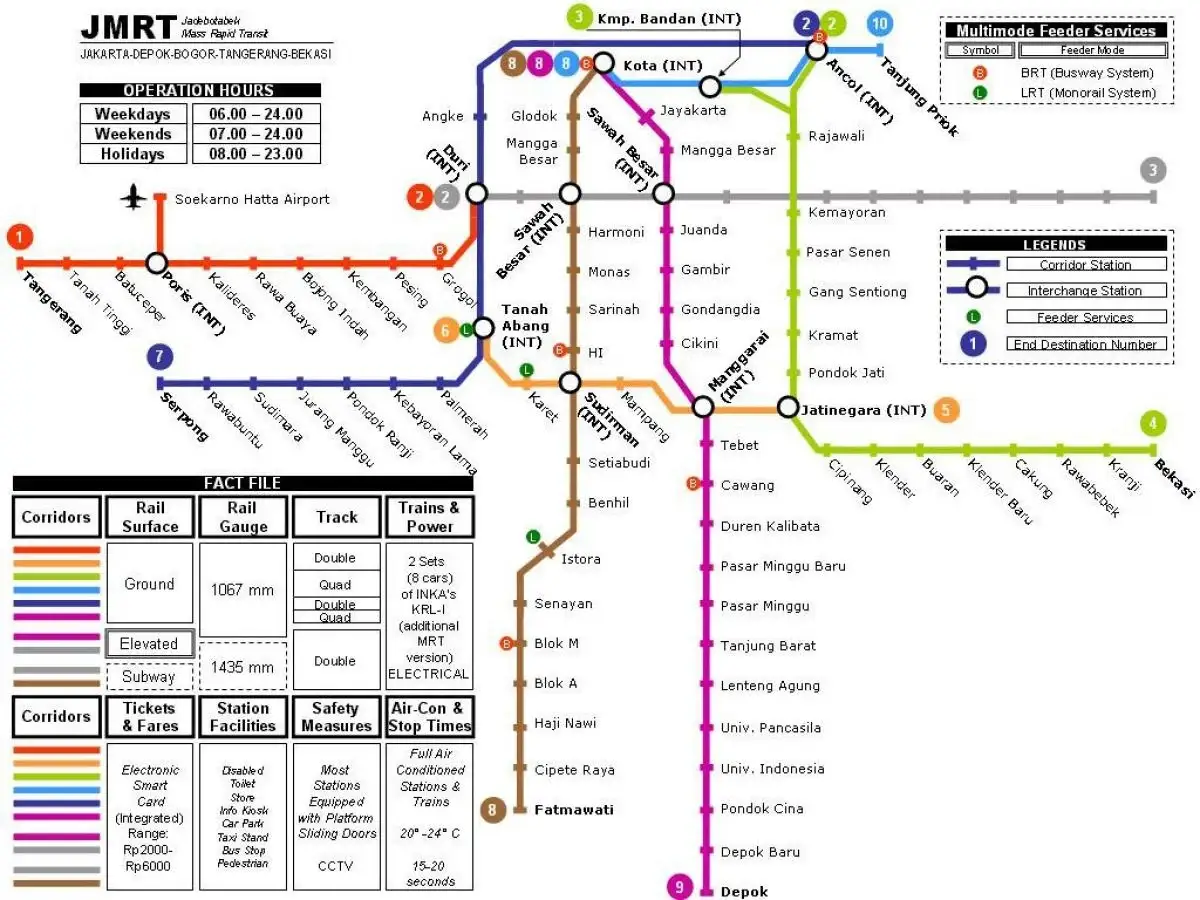Public Transport in Jakarta: Easy Guide for New Expats 2025
Public Transport in Jakarta: A Complete and Easy Guide for New Expats (2025)
For many newcomers, the first taste of Jakarta is not its skyline or cuisine but its traffic. The Indonesian capital is notorious for congestion, and for years, the city’s roads have been clogged with motorcycles, cars, and ride-hailing vehicles. According to TomTom’s Global Traffic Index, Jakarta ranked among the most congested cities in the world in recent years, with commuters losing more than 150 hours annually in traffic. This reality has long shaped daily life, and for expats moving here, the challenge of getting around is one of the most pressing adjustments.
Yet change is underway. In the past decade, Jakarta has invested heavily in developing its public transport system, moving from a city dominated by private vehicles to one that is finally offering modern, reliable, and increasingly sustainable alternatives. The rise of the MRT, the LRT, and the integration of Transjakarta with suburban lines has given expats and locals alike more ways to navigate the capital. By 2025, Jakarta has become far more accessible, and using public transport is no longer a complicated or intimidating task, even for those arriving for the first time.
This guide breaks down everything you need to know as an expat in Jakarta in 2025, from understanding the key systems, to practical tips, to why public transport might just be the smarter lifestyle choice for your new life in the city.
Jakarta’s Major Transit Systems
Image by Ekaputrawisata
Transjakarta, The Backbone of Public Transport
Any conversation about Jakarta’s public transport starts with Transjakarta. Known as a bus rapid transit (BRT) system, Transjakarta is the largest of its kind in the world, with a network spanning more than 260 kilometers and over 250 stations. Ridership numbers remain impressive, reaching more than 32 million trips in January 2025 alone according to data from the Jakarta Statistics Bureau.
The appeal of Transjakarta lies in its scale and coverage. For expats living in residential apartments in South Jakarta, or working in central business districts like Sudirman or Thamrin, Transjakarta’s dedicated lanes can be a surprisingly efficient alternative to sitting in a car. Several corridors operate 24 hours a day, and the expansion into surrounding satellite cities such as Bekasi and Depok has turned Transjakarta into a vital commuter option.
The system is also becoming greener. By early 2025, over 200 electric buses were operating, with a goal of fully electrifying the fleet by 2030. For expats conscious about sustainability, this marks a notable step forward in Jakarta’s transformation.
Jakarta MRT, The City’s Modern Pride
Launched in 2019, the Jakarta Mass Rapid Transit (MRT) system has quickly become the city’s symbol of modern urban life. The initial North–South line stretches from Lebak Bulus in South Jakarta to Bundaran HI in Central Jakarta, linking residential zones with prime office towers.
The MRT currently serves around 3.5 million riders monthly, showing strong year-on-year growth. Trains run from about 5 AM to 11 PM with high frequencies during peak hours, often every five minutes. For expats used to subways in Singapore, London, or New York, the Jakarta MRT feels familiar in its reliability and cleanliness. Ticketing is cashless and fares range between Rp 4,000 and Rp 14,000, making it highly affordable compared to taxis or ride-hailing apps.
Expansion is already underway, with future lines planned to connect more parts of Jakarta and neighboring cities, reinforcing the MRT as a long-term game-changer.
Read also: Best Sport Centers for Expats in Central Jakarta
LRT Jakarta and Jabodebek LRT
For shorter routes within the city, Jakarta’s Light Rail Transit (LRT) is a convenient option. Though smaller in scale, it connects several busy hubs and integrates with Transjakarta and the MRT. In 2024, it recorded over 1.2 million riders, and with further expansions planned, its relevance is growing.
Beyond Jakarta’s core, the Jabodebek LRT, which began operating in 2023, links the capital with Greater Jakarta cities like Depok, Bekasi, and Bogor. With daily ridership averaging between 70,000 and 118,000, this system has quickly become essential for suburban commuters. For expats living in family-friendly housing outside central Jakarta, the Jabodebek LRT makes reaching the city center much easier than in the past.
KRL Commuter Line and Airport Rail
The long-established KRL Commuter Line remains a workhorse, connecting Jakarta with its surrounding metro areas. While stations can get crowded during rush hour, the network is extensive and cost-effective. The Airport Rail Link adds further convenience, giving expats direct access between Soekarno-Hatta International Airport and downtown Jakarta, which is especially useful for frequent business travelers.
Payment and Integration: The Jak Lingko System
One of the frustrations new expats often faced in the past was navigating multiple ticketing systems. That issue has largely been resolved through Jak Lingko, an integrated payment and fare platform. With one card or mobile QR code, commuters can access Transjakarta, MRT, LRT, KRL, and even airport rail services.
For newcomers, the simplest approach is to obtain an e-money card such as Flazz, JakCard, or Mandiri e-money, all widely available in convenience stores. Alternatively, popular e-wallet apps like GoPay and OVO can be linked directly to the Jak Lingko network for seamless transactions. This means you can plan a journey that combines, for example, a Transjakarta bus, an MRT line, and a final connection on the LRT without juggling multiple tickets.
Schedules, Frequencies, and Operating Hours
A frequent concern for expats moving to Jakarta is whether public transport is reliable enough for daily life. While schedules are not always as tightly regulated as in Tokyo or Singapore, the city has made significant progress.
- MRT: Runs from 5 AM to 11 PM with headways of around five minutes during rush hour.
- Transjakarta: Core routes operate 24 hours, making it the most flexible option, especially for late-night shifts or weekend activities.
- KRL Commuter Line: Operates from 3 AM until midnight, though expect peak-hour crowds.
- LRT and Jabodebek LRT: Typically run between 5 AM and 11 PM, with trains arriving every 10 minutes.
This consistency has made public transport a viable daily solution for office workers, students, and expats alike.
Coverage and Connectivity Across the City
The true strength of Jakarta’s public transport is its expanding coverage. In 2025, Transjakarta alone reaches more than 90 percent of the city, and integration with MRT and LRT hubs at key nodes such as Lebak Bulus and Dukuh Atas has created seamless transfer points.
For expats choosing where to live, this connectivity is worth serious consideration. Apartments near MRT or Transjakarta stations command higher rental value because they reduce commuting stress. Similarly, for families settling in Bekasi or Depok, the Jabodebek LRT offers a practical daily link into Jakarta’s central districts.
This is a major shift for a city once criticized for poor connectivity. By combining apartment choices with proximity to public transport, expats can save both time and money while avoiding some of Jakarta’s notorious traffic bottlenecks.
Ridership Trends and Government Goals
Jakarta’s government has set an ambitious target: increasing the share of public transport users from under 10 percent in early 2025 to 31 percent in the near future. Progress has been steady, driven by system integration and infrastructure investments.
Statistics show how usage is trending upward. In January 2025, MRT ridership exceeded 3.5 million passengers, while Transjakarta saw over 32 million rides. These numbers highlight a gradual but clear shift in public behavior, and the presence of expats among these passengers reflects growing confidence in the system.
For newcomers, this momentum signals reliability. Unlike a decade ago, relying on Jakarta’s public transport today is not a gamble but a practical, everyday choice.
Practical Tips for Expats
Even with improved infrastructure, adjusting to Jakarta’s public transport comes with a learning curve. Here are practical insights for newcomers:
- Get a payment card quickly: Pick up an e-money card or activate a Jak Lingko-compatible e-wallet within your first week. It simplifies everything.
- Avoid rush hour when possible: KRL trains and central MRT stations can be extremely crowded during weekday mornings and evenings. If your work schedule allows flexibility, traveling outside peak hours makes the experience much smoother.
- Learn the feeder systems: Free Mikrotrans minibuses operate as last-mile connections from major stations to neighborhoods. For areas not covered, ride-hailing apps like Grab and Gojek are reliable complements.
- Respect local etiquette: Women-only train cars are available during rush hours, and eating or drinking inside MRT or LRT trains is prohibited. Understanding these small details helps expats blend in comfortably.
Sustainability and Future Developments
Jakarta’s transport strategy is not just about moving people, it is about reshaping the city’s sustainability profile. Transjakarta’s ongoing electrification is one example, reducing emissions and operating costs. At the same time, expansion of MRT and LRT lines will continue well into the next decade, gradually transforming Jakarta into a city where public transport is the backbone of urban life.
For expats who may only be in Jakarta for a few years, these changes still matter. Choosing to live near a station, or incorporating public transport into your daily routine, enhances quality of life and positions you in neighborhoods with stronger long-term property value.
Read also: Expat Guide to Beating Jakarta Rush Hour and Heavy Traffic
Closing Thoughts
Jakarta in 2025 is no longer a city where public transport is an afterthought. It has become an essential tool for navigating daily life, whether you are a professional commuting to Sudirman, a family living in Bekasi, or a student heading to class in Central Jakarta.
For expats, the systems may initially seem complex, but once you grasp the basics of Transjakarta, MRT, LRT, and Jak Lingko integration, the city opens up in a way that cars and motorcycles alone cannot offer. It is affordable, increasingly sustainable, and, most importantly, practical.
So, as you settle into your new home in Jakarta, grab your e-money card, step onto a bus or train, and embrace the rhythm of a city that is learning to move better every year. Public transport is not only the smart choice for expats in 2025, it is becoming the way forward for the entire city.
Featured image by Pradamas Gifarry on Unsplash














